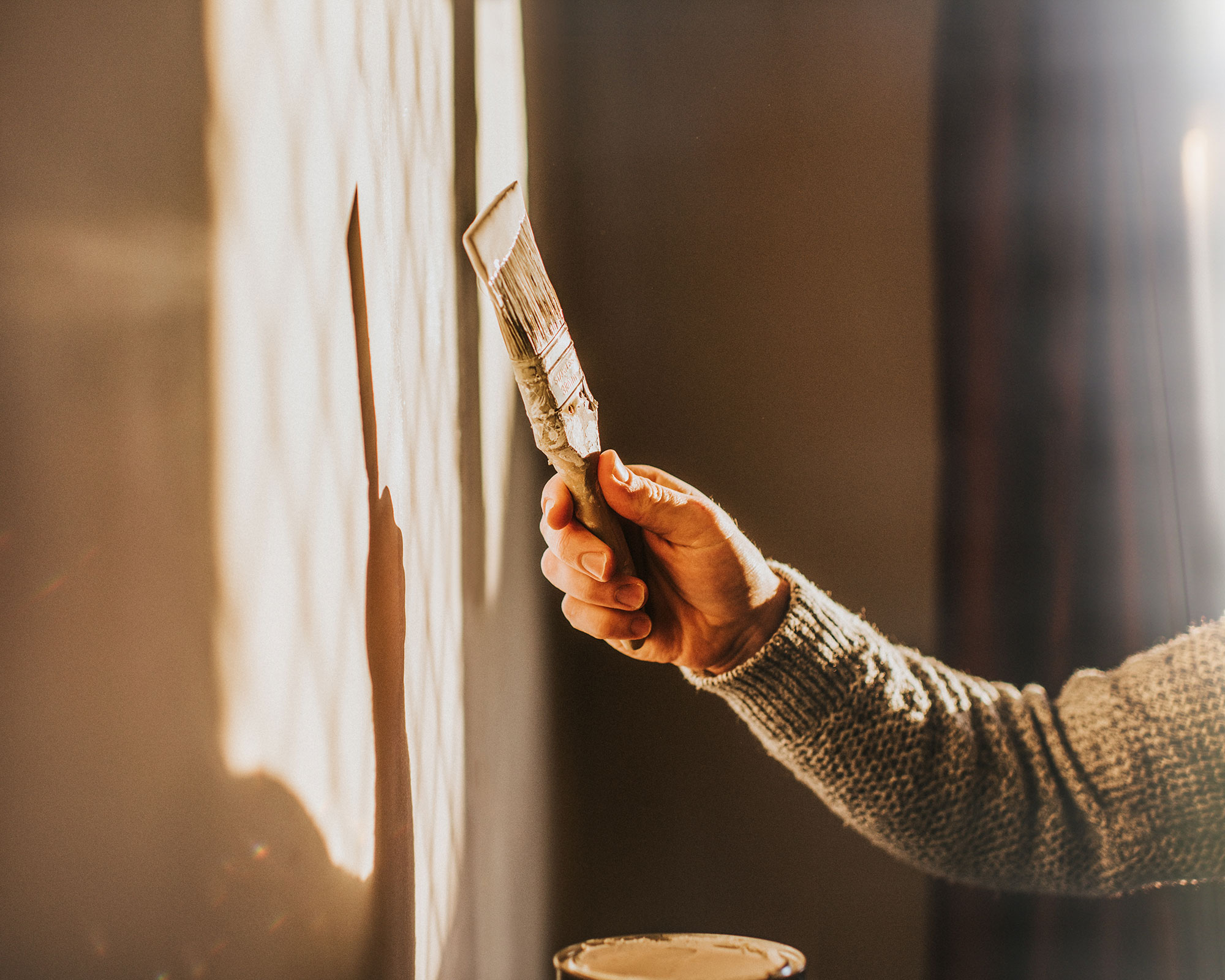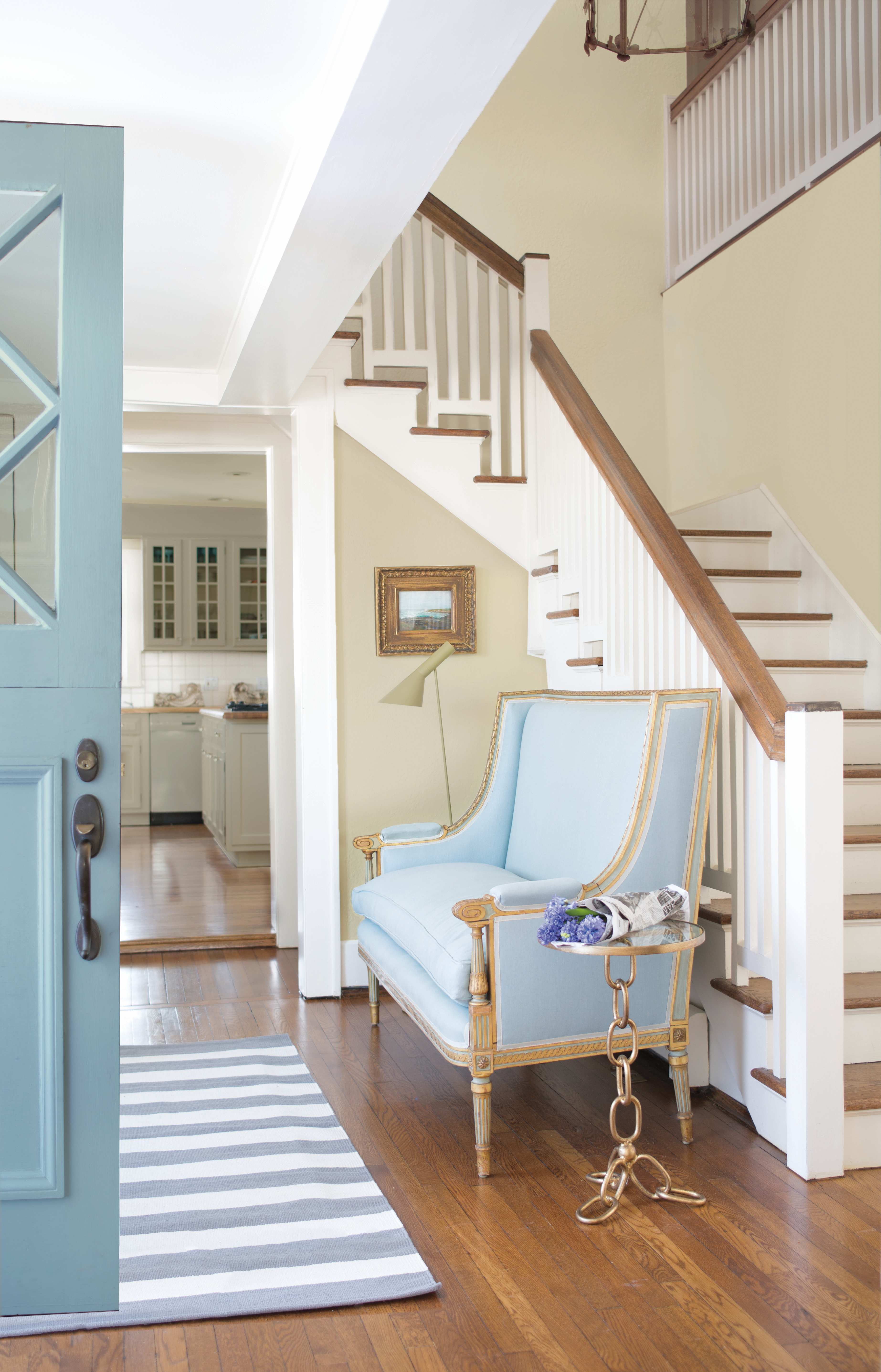How to paint a stairwell – expert advice for painting your home’s tallest space
Follow our expert guide to how to paint a stairwell, including top safety tips and smart prepping ideas that will produce perfect results


Stairwells are essentially the area directly above and around your home’s staircase. Usually at the main entrance to your home, they’re the first area guests step into, so making a good impression is paramount. A beautifully decorated stairwell with a smart runner up the stairs, will make it a pleasure to come home.
Painting a stairwell is not as simple as painting a room. Your staircase ideas and stairwells are often double height – or rather the full height of a property excluding the loft. If you have the budget for a professional decorator to do just one project for you, we recommend you invest it here!
Properties with particularly complex or high stairwells, and any spanning more than two storeys, should have professionally installed scaffolding before you, or your decorator, begins painting.
How to paint a stairwell
Decorating a stairwell entails painting walls that are the tallest, and a painting a ceiling that’s the highest you’ll ever need to paint inside your home. Determined to tackle a stairwell project yourself? We have outlined the main ways to get into every corner of a stairwell in a regular two-storey home, without breaking your neck, and gathered expert advice to ensure you get the best results possible in difficult conditions.
Painting a stairwell using extension ladders
Another method favored by professional decorators is the use of telescopic/extendable ladders, which can be lengthened individually on two sides. They position the shorter rungs on a higher step and the longer rungs three or four steps down. We would caution DIYers against this method but if you do use it, you will need somebody to hold the ladder at all times while you paint and you'll also need a good head for heights.
A very long ladder can be fully extended from the bottom of the stairs to the top of the stairwell, but again it’s wise to have a support buddy on hand. Consider hiring ladders or even better scaffolding for safety, rather than buying if they're only required for this one project.
The safest way to reach a stairwell
The safest way to paint the highest points of your stairwell is using a paint roller and extension poles. We’re not saying it’s the easiest way, your arms and neck will suffer for days afterwards, but it’s definitely less risky than balancing on planks or ladders. You can use a small step ladder or platform on the upstairs landing, like you would to reach any ceiling, but take care to keep it well away from the head of the stairs.
Using extension poles can limit precision, especially when it comes to achieving a neat line between walls and ceiling. For cutting in, we recommend the use of a Paint Edger (try Shur-Line), which is a special pad that creates a sharp line at the top of walls without getting paint on the ceiling above. Look for a Paint Edger that’s designed for use with extension poles rather than one with a fixed handle. You can also buy Corner Pads, which are triangular and will get into any corners that a paint roller can’t reach.

How to start when painting a stairwell
No matter which method you use to reach the walls and ceiling of a stairwell, you should always begin by masking off any areas that don’t need painting. ‘Protect the floor and the staircase with drop cloths. Remove electrical cover plates and protect ceiling lighting fixtures with tape or plastic,’ says Helen Shaw, director, Benjamin Moore.
When covering the treads of a staircase, be sure to push the cloth deep into each tread to prevent a slip hazard on the stairs. Use low tack tape to protect any woodwork and architraves, too. As well as coveralls, it’s worth popping a cap on to keep paint splatters out of your hair and eyes. A disposable shower cap works well.
‘In most cases it will work better to start from the top of the stairwell and work down, so you aren’t leaning your ladder or pole on any wet paint. Working from top to bottom will also ensure you can control any paint drips,’ adds James Greenwood, Paint & Wallpaper Expert at Graham & Brown.
What paint to use when painting a stairwell
When painting a stairwell you need to choose the paint color and finish wisely to avoid having to repaint any time soon! In stairwells where natural light is restricted, consider opting for a pale paint colour, about 20 per cent lighter than you would use in a room with plenty of windows.
If you’re seeking color, introduce it on the staircase rather than the walls. ‘Don’t be afraid to go bold in your choice of staircase color. Hallways can be a tricky space to decorate, but a ‘statement’ staircase is a simple way to add impact here,’ says Lick’s colour specialist Sam Bramley. ‘I love a color block staircase, set against a neutral backdrop, highlighting and leading your eyes upwards to explore other rooms.’
‘When it comes to the best type of paint for stairwell ceilings, look for a specialist ceiling paint that is “dead flat”, applies smoothly, hides most ceiling imperfections and is specially formulated to minimize both lap marks and splatter,’ advises Helen Shaw from Benjamin Moore.
On the walls of a stairwell, it pays to think practically. If the paint carries right down to the staircase, you should opt for a washable or scrubbable formula that can handle sticky finger marks and shoe scuffs. In a busy household, it’s worth considering panelling up the staircase to protect the walls.
Techniques for painting a stairwell
Access issues notwithstanding, painting a stairwell isn’t too dissimilar from painting any wall. Holes and fine cracks should be filled before you start. Prepare the walls for painting by lightly sanding (not necessary on new plaster) and then cleaning with sugar soap.
If you’re painting over a darker color, use a primer first. Open the paint can and then apply the paint with a roller or foam pads to cover large areas quickly, using a W formation and taking care to overlap a little to avoid gaps. Use a paint skuttle or tray with grooves designed to help prevent overloading the roller or pad with paint and practice your technique before you begin.
Stairwells tend to lack natural light, creating shadowy surfaces and making it hard to see where you have been with your paint. In this situation, set up lamps or work lights before you start. We recommend portable work lights with an adjustable beam.

How do you paint a high staircase without a ladder?
‘We tend to use telescopic ladders for standard size staircases as they are safely supported by each step, and we would recommend this for a DIYer too. They are also easy to store as they fold into a small case. Slightly larger staircases may require an adjustable self-supporting A frame but for health and safety reasons we would usually organise for scaffold supports,’ says Alex Glover, professional decorator for Lick.
Painting the ceiling the same color as the walls will relieve the pressure to achieve neat cutting in lines between wall and ceiling. We recommend using a foam roller on an extension pole and seeking out specialist low-sheen ceiling paint to help disguise any unevenness. ‘In addition to sourcing specialist ceiling paint, make sure your roller sleeve is high quality and the appropriate nap for your ceiling texture. Ask your local decorating centre for help determining the best tools,’ advises Helen Shaw, director, Benjamin Moore.
Sign up to the Homes & Gardens newsletter
Design expertise in your inbox – from inspiring decorating ideas and beautiful celebrity homes to practical gardening advice and shopping round-ups.
Linda graduated from university with a First in Journalism, Film and Broadcasting. Her career began on a trade title for the kitchen and bathroom industry, and she has worked for Homes & Gardens, and sister-brands Livingetc, Country Homes & Interiors and Ideal Home, since 2006, covering interiors topics, though kitchens and bathrooms are her specialism.
-
 ALDI just restocked their smart-looking $4.99 self-watering planters for small container gardens, and it's the ideal solution for plant serial killers
ALDI just restocked their smart-looking $4.99 self-watering planters for small container gardens, and it's the ideal solution for plant serial killersThese highly-rated planters are perfect if you are time-poor, a novice gardener, or a frequent short-haul traveler
By Jennifer Ebert
-
 Diane Keaton's living room is proof that 'symmetry in interior design' is far from dated – this concept is still ingrained in our philosophy, but there's a twist
Diane Keaton's living room is proof that 'symmetry in interior design' is far from dated – this concept is still ingrained in our philosophy, but there's a twistSymmetry is a design trick used to create smart-looking spaces
By Jennifer Ebert
-
 7 dorm room organizing rules for less clutter and more space
7 dorm room organizing rules for less clutter and more spaceExperts offer their top tips for creating a well-organized dorm room, no matter the size, space, or layout.
By Ashley Chalmers
-
 How to maximize storage in a small or shared dorm room, according to pro organizers
How to maximize storage in a small or shared dorm room, according to pro organizersFind out all the hidden storage zones you might never have noticed
By Ashley Chalmers